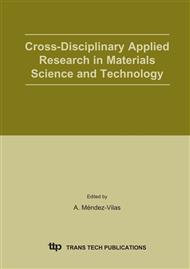p.589
p.595
p.603
p.611
p.617
p.623
p.629
p.635
p.641
Computer Calculations of the Thermally-Induced Magnetic and Electronic Properties of the Rare Earth Compounds RERu2Si2
Abstract:
The aim of this paper is to demonstrate the effectiveness of the calculation method, which takes into consideration the electrostatic ligands field as well as the the magnetic interactions. Our calculations method based on crystal field (CEF) together with the Zeeman effect in one Hamiltonian and allows calculating many of the temperature dependencies of the magnetic and electronic properties of the rare earth compounds. The result of the calculations shows the accuracy of the approach even for the intermetallic compounds. The obtained results for calculations of the compounds of the family in RERu2Si2 (RE – rare-earth element) are fully confirmed the experimental data such as: the easy magnetic direction of all the analyzed compounds, the thermal dependencies of magnetic properties; in particular the giant magnetocrystalline anisotropy of PrRu2S2 with the calculated anisotropy field BA>400T, in-plain anisotropy of ErRu2Si2, the cause of difficulty in magnetic ordering of compounds TmRu2Si2 and YbRu2Si2 as well as effects and dependencies not foreseen before. In this paper we have put together the elementary calculated magnetic properties for the chosen compounds of RERu2Si2 in the paramagnetic region. All Calculations are on the basis of the calculating computer package BIREC 1.51.
Info:
Periodical:
Pages:
617-622
Citation:
Online since:
March 2005
Authors:
Price:
Сopyright:
© 2005 Trans Tech Publications Ltd. All Rights Reserved
Share:
Citation:


